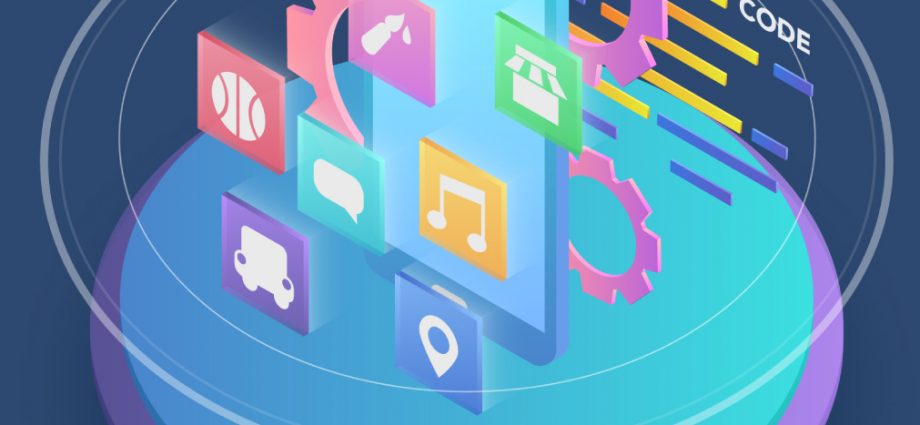The mobile app industry is increasing. New innovative insights are regularly coming. Creative ideas have no limit. Many people in business approach different ways to create a new application and gain a community or modify their existing applications to provide better service to the existing community.
While it seems interesting, mobile app development is a difficult task. Most start-ups are not well aware of the resources and processes to plan and shape the app idea. This lack of knowledge can be a loss for them in creating an app, taking so much risk, invest lots of money, and create something that doesn’t pay you back.
Creating an exciting and good app is a talent that only a few can have. It is instead a skill that anyone can develop by educating themselves in that field. All we need to do is go through every step in the proper manner. We can study the resources we have, analyze the competition and expand our vision.
Steps to implement an app idea:-
- All the features that you want to inbuilt in that app.
- Research the market and find out if there are similar apps already. If yes, find out the ratings, feedback, and something they are missing.
- Prepare the monetization strategy according to the consumer’s needs.
- Approach local vendors and sign the good ones.
- First, create the entire wireframe of the app so that you can imagine the features beforehand.
- Get in touch with the app marketing advisors and start marketing.
- After launching the app, gather the user reviews and responses
What is flutter in mobile app development?
Flutter is an open-source framework created by Google. It is a software development toolkit that makes the mobile app development process easy. Tim Sneath is the product manager of Fluttering. It was released in 2018, though there has been a high demand since last year. Many business people and entrepreneurs have some great ideas when it comes to mobile app development, but they don’t see the expected results.
Lack of strategy and implementation of work is the problem. Earlier, building apps was more expensive as it was required to make two different apps supporting Android and Web. Now, many hybrid toolkits have been launched where you can use other languages in the same framework. Flutter, among all, has been more popular.
Why use Flutter in app development?
Let’s have a look at the features Flutter provides and why we shall go for it;-
- Flutter is a widget-based framework and makes the process of making changes easy. You can modify the widgets without running the code every time. It saves a lot of time.
- The requirement of the JAVAscript Bridge is not there; hence it can work faster than the other frameworks. Flutter is based on the language Dart, which gets converted to JAVAscript in Web.
- Flutter works for both Android and iOS. Therefore, this single framework can create an app suitable for Android, iOS, and Web. It gives you a platform to create high-performance and high-quality apps with ease.
- Dart is the programming language of Flutter. Google developed this language to build applications on multiple platforms.
What is the Layer model of Flutter
The architecture of Flutter includes three parts:-
- The framework that includes the language, Dart.
- The Engine is made in C++.
- A platform-specific Embedder.
Flutter is a layered framework that is extensible. Every layer and every part of the layer is optional, and you can replace it with another. Also, no layer has access to the layers below. JAVA and C++ are the languages used for Android. iOS and macOS are written in Objective-C or Objective-C++. For Windows and LINUX, C++ is used.
The platform-specific Embedder integrates the Flutter code and does existing application modules. The code can also be used as the entire module content. Flutter has several Embedders, and you can always add more.
Flutter Engine, which is written in C++, is the core of Flutter. It works as a messenger between Flutter applications and the primitives necessary. It also includes graphics.
Dart: UI exposes the Engine to the Flutter framework. Then the above C++ code is converted into a dart library.
Flutter framework is the layer that developers interact with. It is written in Dart and provides a lot of features and applications to the developer.
Dart libraries
Dart has a rich library providing several facilities to create programming tasks. In addition, it supports a lot of tools and makes the process easy and creative.
- Dart: core contains all the basic functionalities like dates, integers, collection, etc.
- Dart: HTML contains Document Object Model(DOM) element types, models, events, etc.
- Dart: iop is the library that works with files, processes, HTTP servers, etc.
Conclusion
Flutter is a well-known toolkit. Developers can make a native UI that would look creative. Flutter gives you a lot of advantages in building an app. Two million satisfied users have enrolled since the release of Flutter. It provides a single code base for Android and iOS; it is based on widget-tree, gives you lots of features, and saves time.
What else is required for a perfect app development toolkit? Flutter is the most recommended framework by mobile app development company India. The developers find it both convenient and comfortable using Fluttering. The Flutter App Development Services help you validate your app idea, and they would ensure that you have the best framework needed for your opinion. They can help you build a multi-platform app and guide you with the strategy, ideas, design, test, and launch of the Flutter app.
They would find you the best product-market fit. After the app is launched, they deploy it to various platforms as well. So what are you waiting for? Pitch them your unique ideas and get started in the field of entrepreneurship. Fluttering is the new future. It’s budget-friendly, creative, trustworthy, and a time savior.
https://zoombazi.com/

